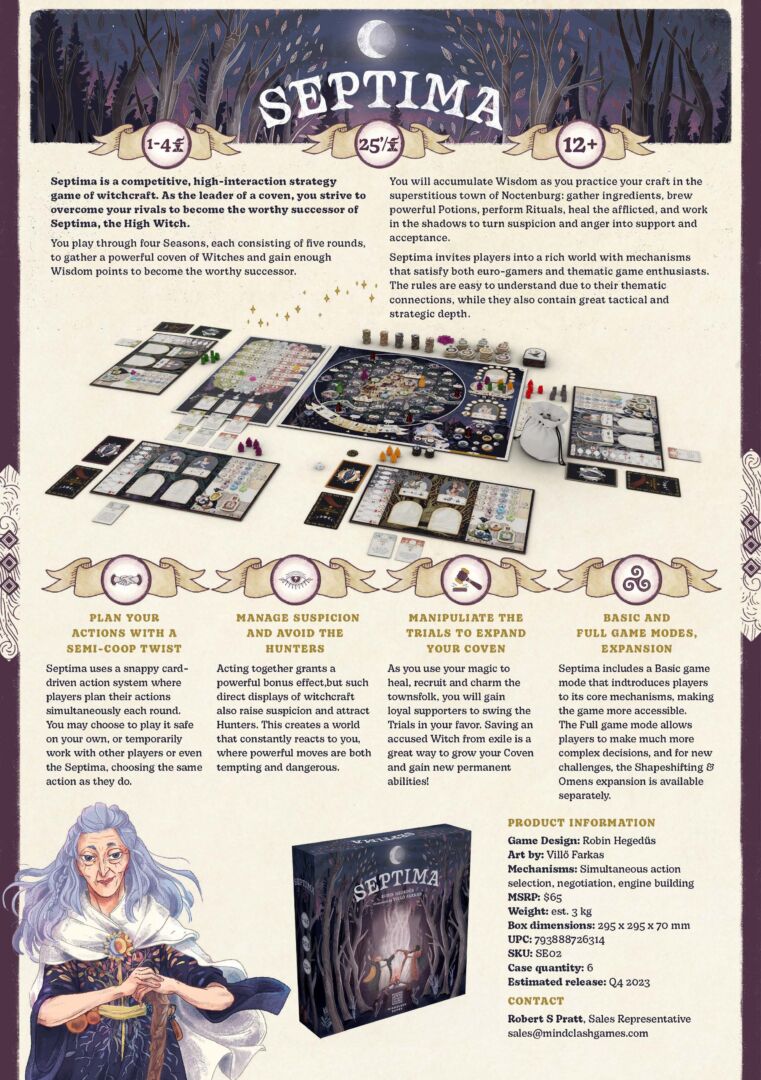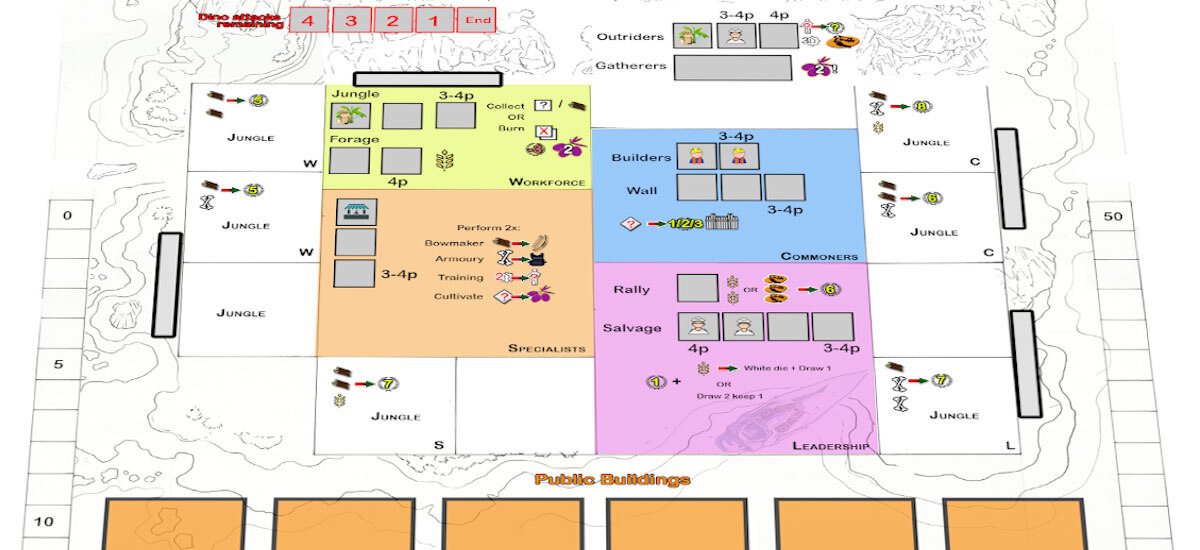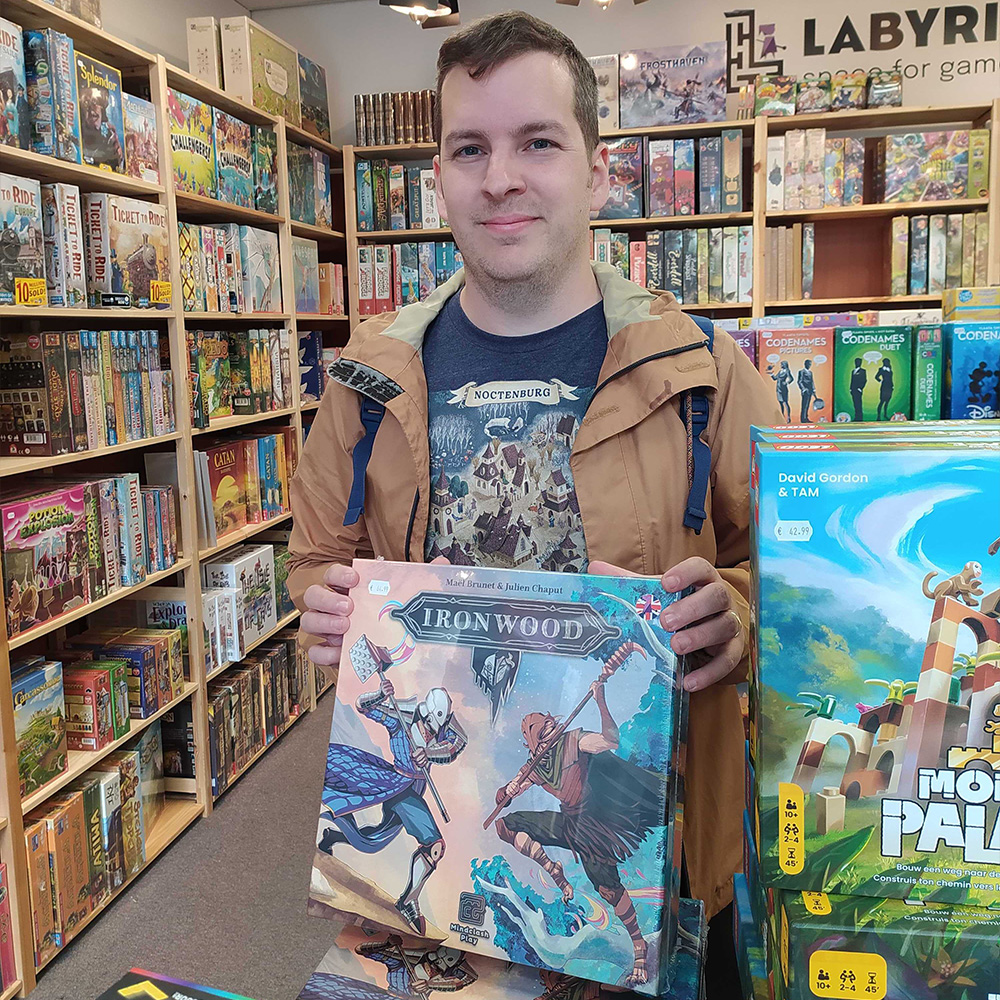It’s been almost exactly ten years since I pitched my first board game to a publisher. Back then, I had no idea how much skill went into crafting a strong board game pitch. I remember the scout responsible for evaluating pitches sitting down across from me, and how those ten-or-so minutes felt both endlessly long and way too short. I also remember how thrilled I was when they asked me to leave the prototype with them for testing, and then, a few months later, how unfair it felt when they rejected it, and I walked away with my eyes downcast, retrieving the only existing copy of the game
Fast forward a decade, and I am on the other side of the table. At Mindclash Games, I am now the first person to see pitches from aspiring designers. I filter them, learn the games we see potential in, organize playtests, and usually write the (mostly rejection) responses.
It might seem harsh that rejection is the default, but that’s one of the key points of this blog post: if you’re pitching a game, prepare for fierce competition and for most responses to be a “no.” On average, we receive at least a hundred pitches a year (and the number is growing), and if we publish one externally designed game per year, the aspiring designers are already doing well (especially considering that many of our published titles are in-house designs). If you catch a lucky year, your chances with us are 1%, and I don’t believe the success rate is significantly higher at other publishers either.In this guide, I’ll walk you through methods and best practices that can significantly improve your odds, based mainly on the characteristics of pitches that most easily make it past the initial, often insurmountable barrier.
1. Research the Board Game Publisher Before You Pitch
Many designers try to fight low acceptance rates by sending their game pitch to every publisher they can find. There’s nothing inherently wrong with casting a wide net, in fact, that’s how you’ll get diverse feedback the fastest.
But it’s crucial to know what kind of games a publisher specializes in and to genuinely consider whether your game fits into their portfolio. Consider the game’s theme, mechanics, size, and duration. As a rule of thumb, publishers usually look for games that fit the direction outlined by their previous releases. If they are planning to branch out, they do so cautiously, and even then, they seek games that are only slightly different from what they’ve already published.
If you still want to pitch something outside their usual scope, ask first, maybe behind the scenes, they are planning to expand in that direction (e.g., Mindclash Play’s debut with Astra), but this is rare.You might be super enthusiastic about your new game and feel slowed down by having to research each publisher individually. But if you send your pitch blindly, it reflects poorly not just on your game but on you as a designer. If you want the publisher to take your game seriously, you have to first take their work seriously.

2. How to Present Your Board Game Pitch to a Publisher
When a publisher receives dozens of pitches, the format matters: you want to make your submission easy and efficient to evaluate.
Start with a sell sheet. This is a one-page overview that tells us:
- What the game is about
- Complexity level
- Core mechanics
- Unique selling point
- Visual style or theme
This is like the BoardGameGeek description for players: a quick way for a publisher to decide “yes”, “maybe”, or “no”.
Next, include a short gameplay video. Ten minutes is plenty to walk through the concept, show how elements interact, and communicate the game’s feel without diving into every rule detail. You can film your physical prototype or use Tabletop Simulator.
That’s already plenty for sharing a pitch. But if you want to go the extra mile, include:
- An illustrated rulebook (written or video)
- A playable Tabletop Simulator mod (avoids shipping and is easy to update)

3. Why Board Game Prototypes Need Visuals in a Pitch
Surprisingly often, we receive pitches with no visual design. Cards made from Excel cells, Word shapes as icons, and maps made only of geometric figures, no imagery at all. The reasoning is often “mechanics are what matter.”But even for abstract games, you need some kind of theme or visual identity to help people imagine the game on the table. Think: could Perseverance deliver the same experience if the dinosaurs were just green and blue cubes? Could we really feel like stranded survivors if the resources were marked with letters instead of icons?

You can say visuals “don’t matter mechanically”, but to help people feel the potential experience of your game, visuals are essential. You don’t need to be a graphic designer, search online for placeholder art and icons. They only serve to communicate your theme and help playtesters understand how the mechanics support the game’s narrative.
4. Highlight the Familiar and Unique Elements in Your Board Game Pitch
Designers often ask: what’s most important to include in a pitch? After all, they could talk about their game for hours, so what should they focus on? Aside from the basic game details, I believe your sell sheet should focus on two things:
- Familiarity: Which mechanics, themes, or experiences will players recognize? Familiarity lowers the barrier to entry. Think about which existing games yours would sit next to in a store.
- Innovation: What makes your game different from similar titles? What is the hook that will make it stand out in a crowded market?
Players often embrace innovation because they see something familiar first. Publishers are the same. The balance of the known and the new is easier to market and easier to sell.
Final Thoughts: Give Your Board Game the Best Chance at Publication
New designers often dream of creating something completely unlike anything before, a total reinvention of board games. In such a saturated board game market, how realistic is that goal? And even if it were possible, how willing are players to venture into something completely unknown?
In my experience, players like familiar mechanics and themes. That sense of familiarity makes them more open to innovation. When preparing your board game pitch, highlight elements that players might already know or enjoy and ask yourself: if a store stocked your game, which existing board games would it sit next to?On the other hand, you should also clearly state what’s new. What makes your game stand out from similar titles? This combination of the familiar and the fresh not only helps convince players to try your game, but it also helps the publisher start thinking about how to market it.

I hope these tips on how to pitch a board game to a publisher prove useful. My goal is to shed light on what it is like on the other side of the pitch, and how to remove as many barriers as possible so your game can be judged on its true merits.
Wishing you lots of success with your board game submission!
